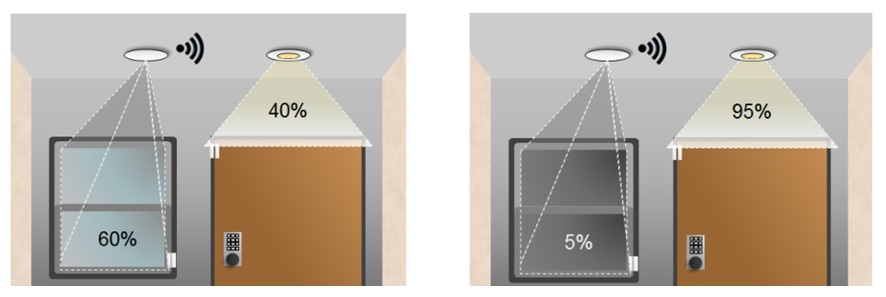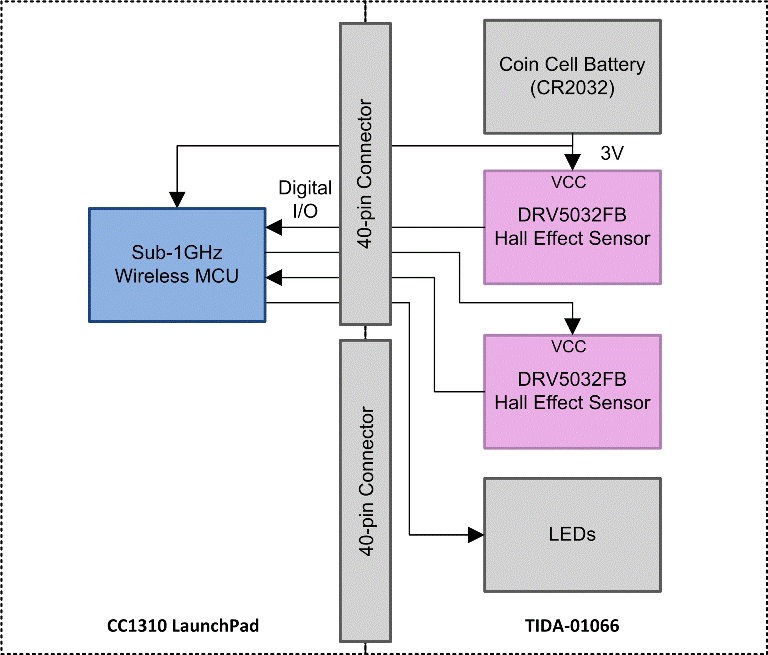SSZTA62 may 2017
Collecting data from the surrounding environment can be beneficial if you want to understand changes in environmental factors caused by building-automation algorithms and gather more sensor data relating to the security of the structure. One problem with adding more sensors to a building is the vast amount of cabling required to power and communicate with these devices. Internet of Things (IoT) devices with wireless sensors alleviate cabling issues, and I wrote about resolving battery-life problems in my previous blog post, “Increasing battery life in IoT devices.” But some applications are still wired, including two that I want to tackle today: ambient light sensors and door and window sensors. There are ways to make these traditionally wired applications wireless, and it’s not as cumbersome as you might think!
When used in commercial buildings, ambient light sensors detect the intensity of light in a given area and balance the overall ambient light in a given work space. Light sensors are usually wired to the lights they control. A wireless solution can be created by connecting the lights to a smart controller with wireless connectivity and installing a wireless light sensor near a window. The wireless sensing node would also make retro fitting the system easier.
If the sunlight coming through the window is not enough to light the work area, but the lights in the room are not adjustable, then the room could be too bright. Let's say that 60% of the light enters the room through skylights and windows. A wireless ambient light sensor platform can sense the intensity of that light and dynamically adjust the artificial light source to produce the other 40%. Since the artificial light source isn’t running at full power when natural light is also present, the building will consume less energy (Figure 1).
 Figure 1 Ambient Lighting
Control
Figure 1 Ambient Lighting
ControlIf wireless ambient light sensing seems interesting, see TI’s Energy Harvesting Ambient Light and Environment Sensor Node for Sub-1GHz Networks Reference Design.
Door and window sensors will also soon become wireless. Many industrial and building-automation security systems use sensors to monitor the opening and closing of doors and windows. In a security system, a central monitoring device generates notifications and alarms based on information from multiple door and window sensors. That creates a lot of wiring that needs installation. Plus, switching all door and window sensors to battery power makes the maintenance cost of changing batteries prohibitive.
Door and window sensor applications typically use magnets to determine when a door or window opens or closes. In a typical configuration the magnet is embedded in the door or window and the sensor is attached to the door or window frame. The sensor and magnet are placed such that they are in close proximity when the door or window is closed, and away from each other when the window or door is opened. Because these sensors are used primarily in security applications, tampering detection is required. Some configurations use multiple sensors to detect magnet tampering.
To enable long battery life, TI’s Low-Power Door and Window Sensor with Sub-1GHz and 10-Year Coin Cell Battery Life Reference Design uses two ultra-low-power digital Hall effect sensors, as shown in Figure 2.
 Figure 2 Block Diagram of TI’s Door and
Window Sensor Reference Design
Figure 2 Block Diagram of TI’s Door and
Window Sensor Reference DesignEnabled by the ultra-low-power digital Hall effect sensors and SimpleLink™ wireless microcontroller (MCU) platform, this reference design demonstrates a door and window sensor solution that requires no wiring, while also fully maximizing battery life.
Battery life will be a key concern as more building-automation applications turn to wireless sensor nodes. Ultra-low-power sensors, op-amps, and wireless microcontrollers from Texas Instruments can help lower average current in your battery powered applications.
Additional Resources
- These TI reference designs can help you achieve longer battery life:
- These TI reference designs feature always-on wireless sensing applications:
- Watch our training series to learn more about optimizing wireless sensor nodes.